Tl;dr;
- B2B market segmentation categorizes businesses into specific groups for targeted marketing, while customer segmentation focuses on tailoring offerings to existing clients' needs, enhancing customer-centricity and retention. B2B differs from B2C in decision-making complexity, sales cycle length, and customization requirements.
- B2B market segmentation enhances business strategy by focusing on high-conversion segments, increasing revenue, optimizing marketing spend, driving product innovation, improving customer experience, refining messaging, and boosting customer retention.
- Designing B2B market segments involves stakeholder engagement, setting clear objectives, selecting segmentation criteria, utilizing existing data, collecting customer feedback, and then creating and targeting distinct groups based on common characteristics and needs for more effective marketing.
- For effective targeting, B2B products are complex and often customized, requiring marketers to create segments that address varied technical, service, and compliance needs.
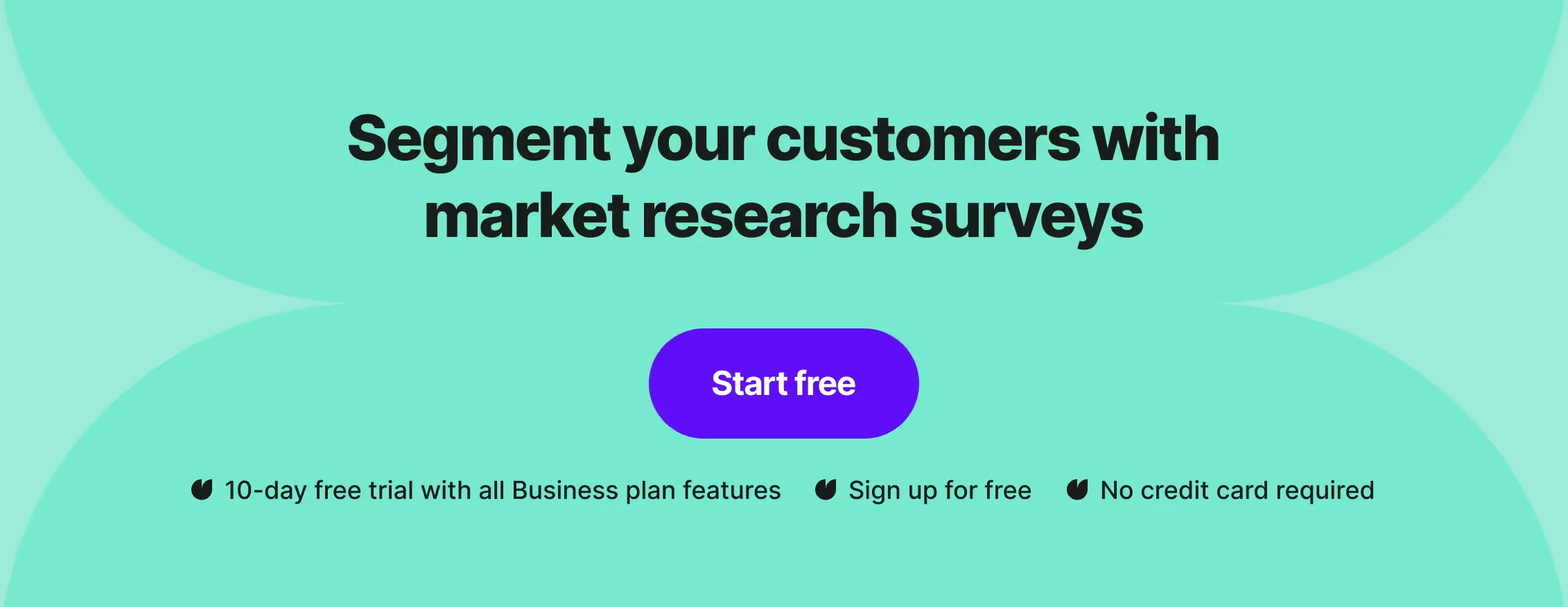
Gone are the days of one-size-fits-all marketing—especially in the B2B, where every client feels like a unique puzzle piece. B2B market segmentation is essential for any marketer looking to deliver tailored strategies and achieve better results, and this article will provide you with a comprehensive understanding.
So, if you're looking to boost your marketing precision, increase engagement, and drive sales, keep reading. Your bottom line will thank you.
Understanding B2B market segmentation
B2B market segmentation is a strategic approach to dividing a business market into distinct groups based on specific characteristics and behaviors, enhancing targeted marketing efforts and business efficiencies.
How customer segmentation helps build a customer-centric business model
Customer segmentation in the B2B context aids you in pinpointing the unique needs and attributes of different groups within your market.
By recognizing and focusing on these groups, you're able to tailor your product development, marketing strategies, and customer service to meet their specific requirements. This enables establishing a customer-centric business model, which prioritizes your target audience's needs and helps increase customer satisfaction and loyalty.
Customer segmentation vs market segmentation
- Customer segmentation: Focuses on existing clients, categorizing them based on their purchase history, interaction with your services, and potential for future engagement.
- Market segmentation: Broadly targets potential customer groups in the market at large, considering factors that might influence their decision to engage with your company.
Both practices are intertwined, but customer segmentation drills down into the nuances of your current client base to leverage growth and customer retention.
Differences between B2B and B2C market segmentation
The segmentation of B2B markets diverges considerably from B2C, primarily because of the complexity of transactions and the length of the buyer's journey in B2B market scenarios.
- Decision-making: B2B purchasing decisions often involve multiple stakeholders, while B2C usually involves an individual or family.
- Sales cycle: The B2B sales cycle is typically longer, with a greater need for nurturing leads and building relationships.
- Customization: B2B products or services often require customization and more personal relationships between buyers and sellers.
Understanding these differences is crucial for effective segmentation efforts and targeting in a B2B environment.
Advantages of B2B market segmentation
In B2B market segmentation, you'll discover potent tools for sharpening your business strategy. By dividing the market into smaller, more focused segments, you can tailor your approach for maximum impact and efficiency.
Boosts revenue
By targeting the segments most likely to convert, your potential for revenue growth escalates. Concentrating your efforts means that your sales team can work with leads that have a higher likelihood of closing rather than casting a wide net with less precision.
Reduces costs of sales and marketing campaigns
Segmenting your B2B market enables you to allocate your marketing budget more effectively. When you know which segments are most valuable, you can focus your marketing strategy there, reducing waste in less productive areas.
Improves product development
Segmentation leads to a deeper understanding of different customer needs, which can drive innovation and improvements in your product development. Tailoring products to meet the specific requirements of each segment can make them more competitive and desirable.
Improves customer experience
Understanding the unique challenges and needs of each of the customer segments allows you to create more personalized experiences for your customers. This tailored approach can significantly enhance customer satisfaction and engagement with your brand.
Refines marketing messaging
You're able to craft messages that resonate deeply with each segment by understanding their specific interests and pain points. Clear and targeted communication stands a better chance of making an impact, thereby improving the effectiveness of your marketing campaigns.
Improves customer retention and loyalty
When existing customers feel understood and valued, they're more likely to remain loyal to your brand. Segmentation ensures that your efforts in customer service and relationship management are finely tuned to the expectations of each distinct group, reinforcing their commitment to your company.
How do you design market segments?
To effectively segment your B2B market, you'll need a structured approach. Follow these steps to ensure the segments you develop are actionable and aligned with your business strategy. For best results, use expert market segmentation tools.
Ensure stakeholder engagement
Firstly, you must involve key stakeholders from various departments within your company. Their insights will inform the segmentation process and ensure alignment with overall business goals.
Identify the goals and business objectives
Clearly define what you aim to achieve with the B2B customer segmentation. Your objectives may range from enhancing customer experience to achieving more efficient targeting in marketing campaigns.
Determine the segmentation criteria
Select relevant criteria that reflect your customer's needs and behaviors. These might include industry, company size, geographic location, or buying patterns.
Use existing data
Examine your CRM and sales data to uncover trends and patterns that will inform your segmentation. This data is crucial in understanding the current state of your market.
Collect and analyze customer data
You need to acquire detailed information on your potential customers. Surveys, interviews, and industry reports can be valuable sources of this data.
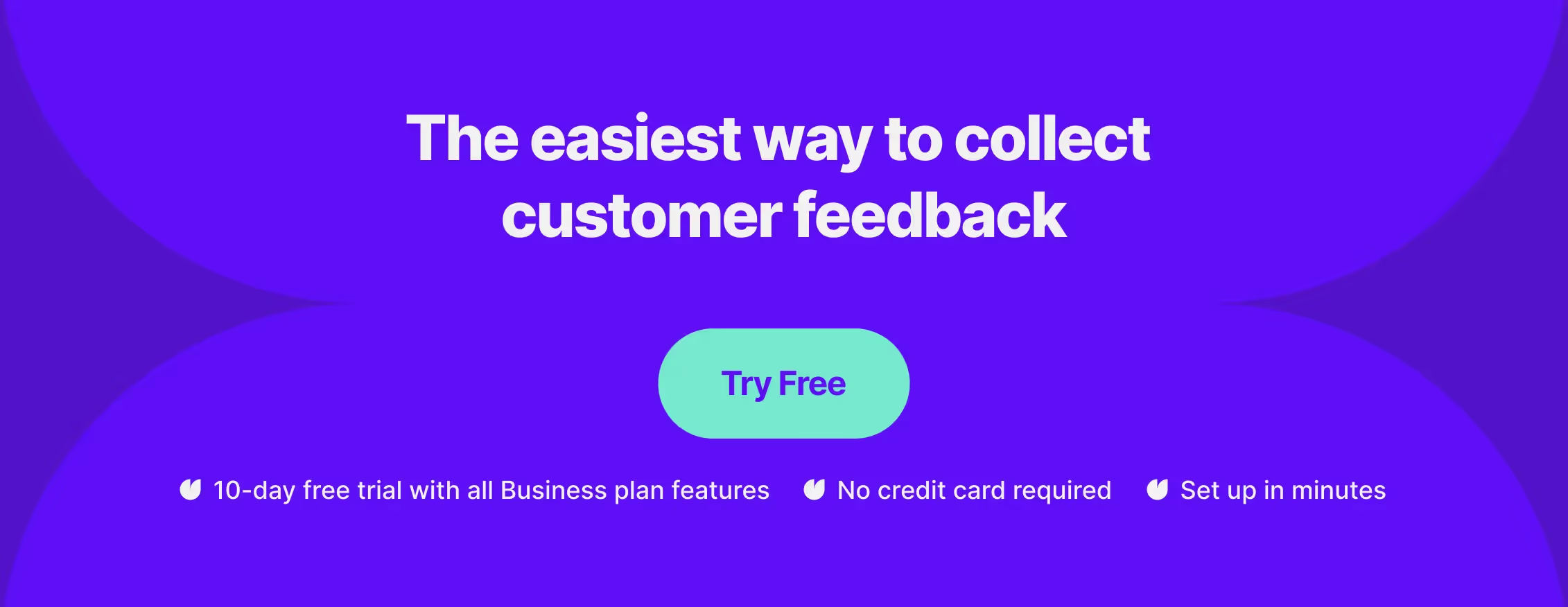
How to gather and analyze customer data
To gather data, utilize tools like surveys, interviews, and analytics software. Analyze this data to identify common characteristics and needs among your potential customers.
Create market segments
With the data you've collected and analyzed, develop distinct market segments. Each segment should represent a group of potential customers with similar traits and behaviors.
Target segments
Finally, tailor your marketing strategies to the needs of each segment. Personalized content and targeted advertising can increase engagement and conversion rates.
B2B customer segmentation methods
In B2B market segmentation, identifying distinct groups within your business clientele is crucial. Leverage these methods to tailor your marketing strategies and meet the precise needs of each segment.
Firmographic segmentation
Firmographic segmentation involves categorizing businesses into groups based on shared company attributes. This may include:
- Industry: Manufacturing, Healthcare, Tech, etc.
- Business Size: By number of employees or annual revenue.
- Company location: Where the company is headquartered or operates.
- Growth Stage: Startups, Scale-ups, Established Enterprises.
Behavioral segmentation
By examining customer interactions, behavioral segmentation delves into patterns such as:
- Usage Rates: Frequent users versus sporadic users.
- Purchasing Behavior: Loyalty to your brand and repurchase rates.
- User Status: Potential, first-time, and regular customers.
Segments based on tiers
Tier-based segmentation allows you to rank customers based on the value they bring to your business, such as:
- Top-Tier Customers: High revenue and strategic importance.
- Mid-Tier Customers: Moderate importance and potential for growth.
- Lower-Tier Customers: Smaller accounts that require less personalized attention.
Segments based on needs
Align your offerings with customer requirements through needs-based segmentation:
- Custom Solutions: Services tailored for unique business problems.
- Standard Offerings: General products suitable for a broad audience.
- Service Support: Differentiating customers who need extensive support versus those who do not.
Segments based on value
Value-based segmentation assesses customers according to their revenue potential and cost to serve, considering:
- High Value: Customers offering significant revenue or strategic value.
- Medium Value: Customers providing average revenue with appropriate resource allocation.
- Lower Value: Customers require minimal resources but yield lower returns.
Customer segmentation by customer sophistication level
Segment your customers by their level of expertise and sophistication:
- Experts: Customers with advanced knowledge of your products or industry.
- Intermediate: Those with a moderate understanding need some guidance.
- Novices: Customers requiring detailed support and education on your offerings.
Challenges of segmenting B2B markets
Segmenting B2B markets involves navigating through a series of intricate challenges unique to the nature of how businesses make purchasing decisions.
More complex decision-making
In B2B markets, you'll find decision-making processes typically more intricate than in B2C markets. Businesses often have multiple stakeholders involved in the purchasing process, each with their own concerns and criteria.
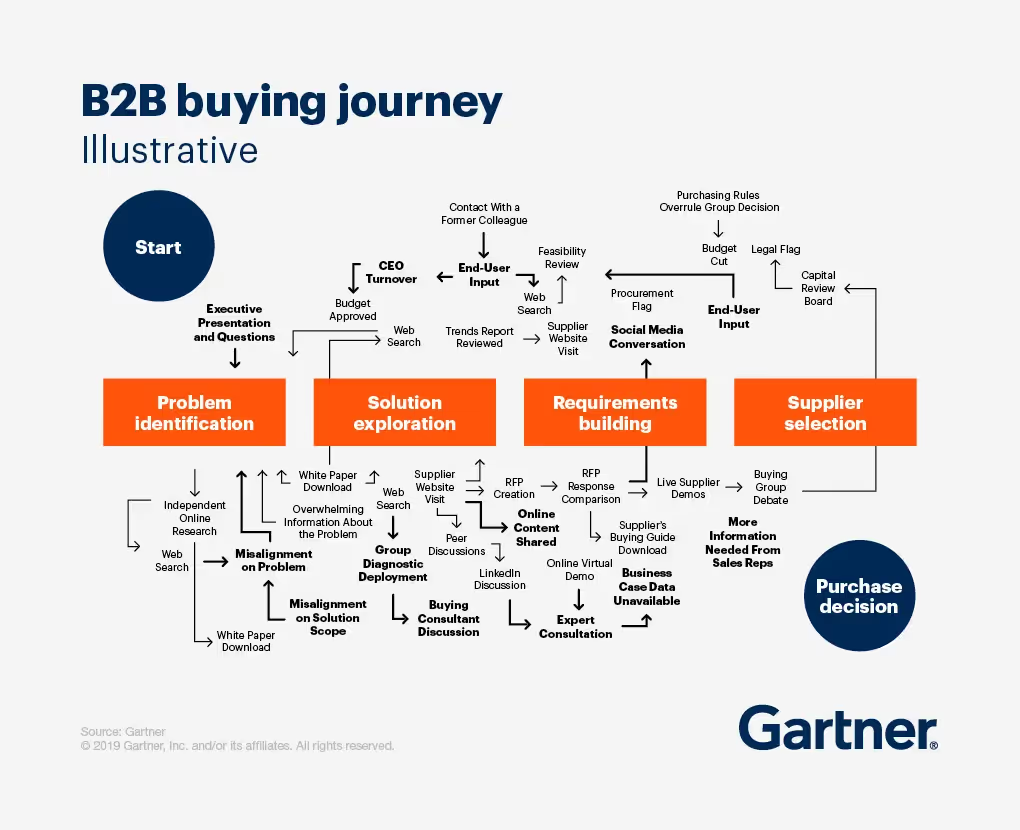
Key factors influencing B2B decisions include long-term relationships, strategic value, and return on investment. As a result, understanding and grouping these decision-makers requires a deep insight into organizational structures and purchase flow within businesses.
More rational buyers
B2B buyers tend to base their buying decisions on logic and rational evaluation rather than emotion. This rational approach means your segmentation must account for the buyers' focus on efficiency, scalability, and how well a product or service meets specific business needs.
As these factors can significantly vary from one business to another, segmenting markets based on these rational requirements demands an extensive understanding of diverse industry needs and operational nuances.
Complexity of B2B products
The products and services traded in B2B markets often come with high complexity and customization. Unlike standardized consumer goods, B2B offerings are usually tailored to address specific business problems.
As a marketer, you must consider that your market segments could require distinct variations of your product, which should cater to different technical specifications, service agreements, or regulatory compliances. This complexity means you'll need a sophisticated approach to accurately identify and define market segments.
Design your B2B customer segments with Survicate
B2B market segmentation is a critical component of strategic marketing that goes beyond mere categorization. It involves a deep dive into understanding the diverse needs and characteristics of your target market. Effective segmentation enables businesses to tailor their marketing efforts to specific customer groups, enhancing engagement and conversion rates.
Utilizing Survicate can significantly aid in this process by gathering detailed customer feedback. Through its targeted surveys, Survicate allows you to better understand market segments, uncovering key insights that can inform and refine marketing strategies.
This isn't just about numbers and data; it's about insights that breathe life into your strategies, making every marketing move you make more meaningful and every customer interaction more impactful.
So why not take the leap? Experience the full power of informed segmentation and sign up for Survicate's 10-day trial, offering all the features of the Business Plan at your fingertips.
Dive in, and let's make those market segments work for you.








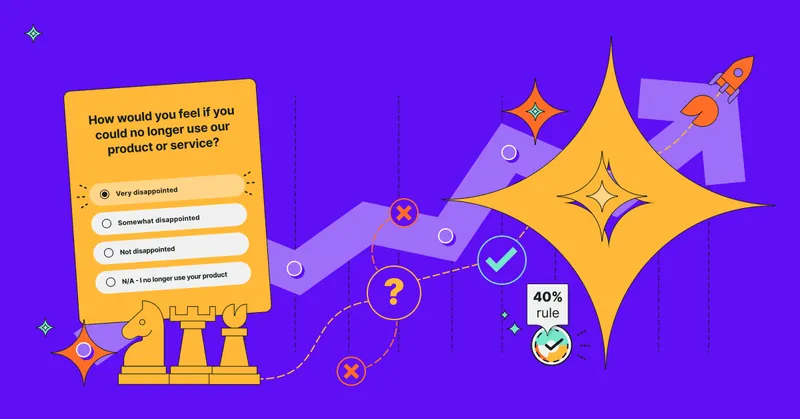

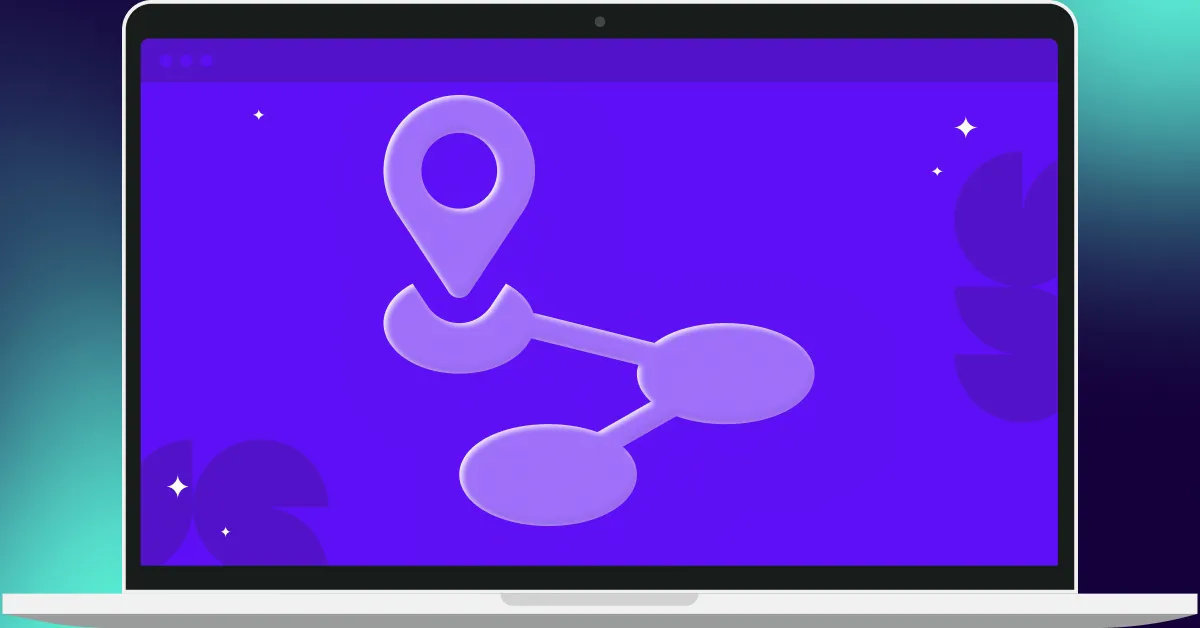
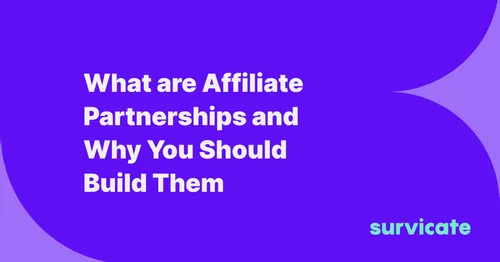
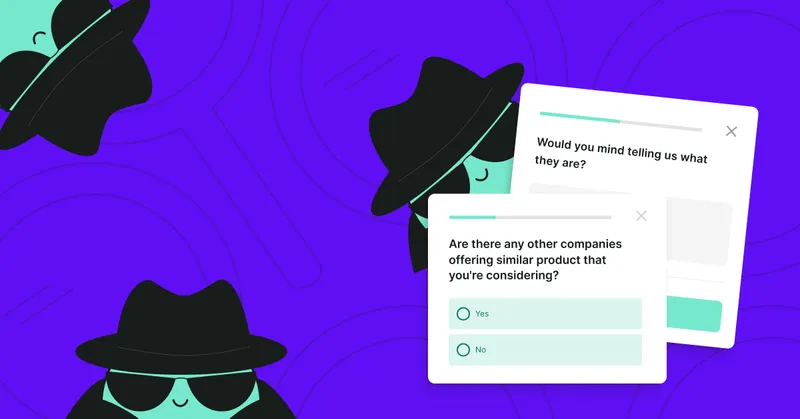
.svg)

.svg)



